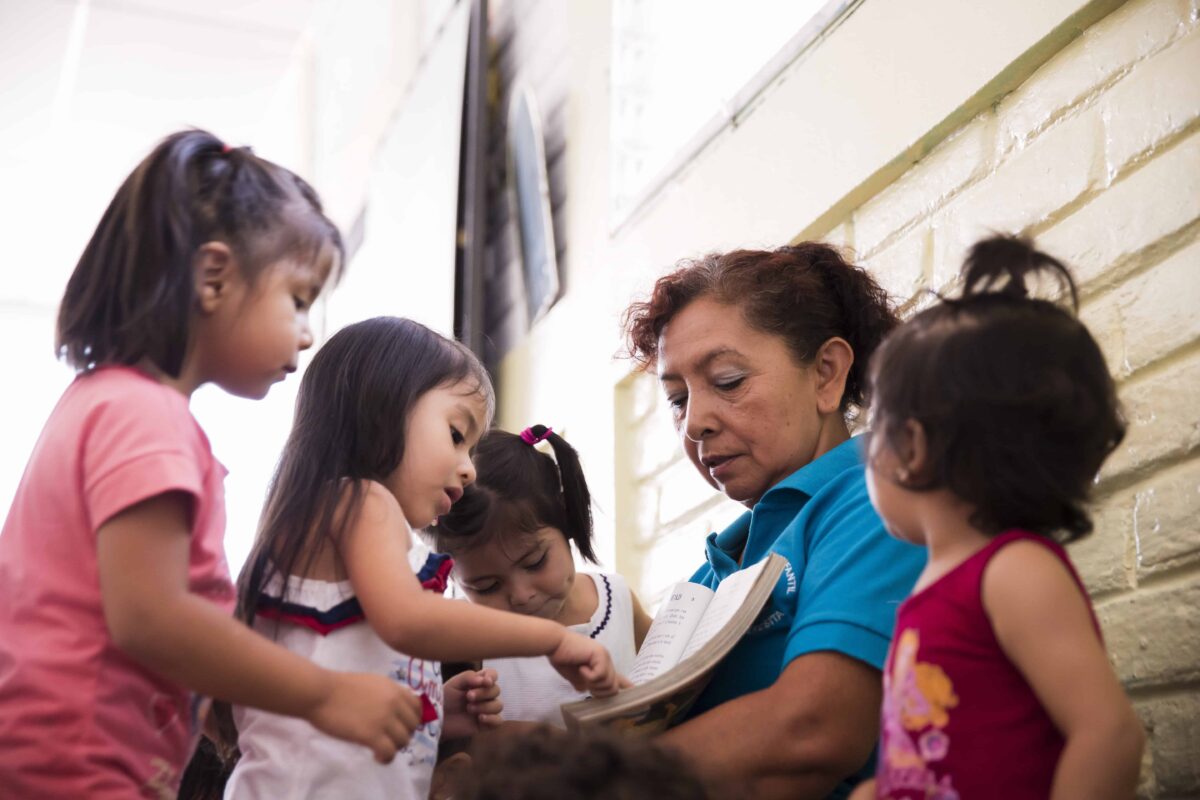Reading is the basis of knowledge. From learning about history and science, to navigating day to day tasks and being able to get lost in a fantasy world – this is all possible by reading and understanding what we read, what we know as reading comprehension.
But learning to read does not happen naturally, as when we learn to speak a language in childhood after repeated exposure to a language. Literacy and reading comprehension require an intentional and explicit effort to develop two fundamental skills: First, understanding the language in which you want to read; second, decoding, or being able to interpret the symbols on the page into the sounds they make.
This seems relatively straightforward, especially in the case of a “transparent” language such as Spanish, in which most letters have only one sound. Yet, Latin American and Caribbean (LAC) students continue to perform poorly on reading, which is expected to have worsened as a result of the pandemic.
In 2019, 16 countries in the region participated in the Fourth Regional Comparative and Explanatory Study (ERCE), which evaluated third and sixth grade students on reading, mathematics, and science. An analysis of the results concluded that the majority of students – more than 80 percent – in Panama, the Dominican Republic, Honduras, Guatemala and Nicaragua did not reach the minimum levels of reading proficiency in the sixth grade.
But what does the current evidence on teaching reading comprehension tell us? Recently, as the Technical Unit Director in the Education for Development Division, I gave a talk at RedLEI Moot 2022, a virtual dialogue to reflect on early grade reading evidence and best practice in the region.

Aimed primarily at teachers from the region, I shared the latest evidence based on years of research and studies on what reading comprehension is, the subskills that must be taught to achieve it, and the specific activities that teachers can implement in the classroom to develop strong readers. Some of the key concepts and strategies included:
- Knowing a language and being able to read the words on a page (decoding) are required to be able to read and write. Both skills must go hand in hand and each skill is necessary but not sufficient in and of itself to foster reading comprehension.
- Teaching reading comprehension should begin early and be taught simultaneously with other key reading skills – it does not have to wait until certain subskills have been mastered.
- Developing oral language comprehension (reading aloud is especially effective) is an important precursor to developing reading comprehension.
- Children need to learn the structure of text and how it differs from oral language (e.g. punctuation marks, intonation, etc.).
- We must explicitly teach comprehension strategies (for example, asking critical questions about the characters or plot, self-monitoring, etc.).
- Discussing, analyzing and writing about texts helps learners progress from comprehension at the literal level (basic) to the inferential (medium) and finally to the evaluative or critical level (advanced).
- We need to motivate children to love reading by creating comfortable and fun reading spaces, providing interesting texts for them to read, allowing them to choose their topics, etc.
The full presentation is available here (in Spanish).
Rebecca Stone, Ed.D., is an early literacy specialist who recently led a systematic review of early grade reading literature in Latin America and the Caribbean. Rebecca has led several early literacy programs in the region and across the globe. She currently leads the technical unit in Creative Associates International’s education division overseeing a team of specialists working on the design and implementation of education programs to ensure that all children and youth have access to quality education.